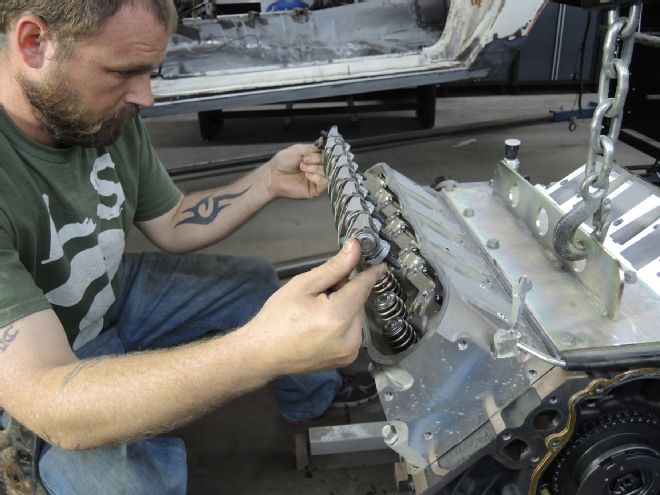
LS engine architecture is indisputably amazing. There are examples everywhere, including the pages of Car Craft, of engines plucked out of salvage yards making reliable horsepower even at 1,000+ hp. We've also heard the stories of the stock top-end components letting go and causing catastrophic damage. In our case, the 2013 6.0 L LQ4 that we're dropping into our 1978 Camaro Z28 project ZedSled is very capable of impressive and reliable power, having the added benefit of the rectangle-port ( LS3) heads right from the factory. With a Cam swap spec'd out by John Bouchard (JohnBouchardEngines.com) and custom ground by Comp, we're going to be in the range of 500 hp NA. The plan for this engine is to eventually attach some sort of mechanical adder to make stupid power and lots of tire smoke, so we're going to address one of the Achilles' heels of the LS top end: the stock rocker arms. They can and will fail if correctly abused, sending needle bearings cascading into the bottom end and oil galleys making a real mess and lots of crunchy sounds. If you're planning on higher than stock rpm or making more than 500 hp, consider the Comp Cams' Rocker Arm Trunnion Upgrade Installation Kit for the LS1/2/3/6/7 (PN 13702-KIT) as part of your LS build. It'll cost you a little less than $150, and that's way cheap for that kind of peace of mind. We toss in a set of new dual valvesprings to round out the top-end trifecta of a camshaft, rocker arm, and spring makeover, and guarantee that we won't be haunted by needle-bearing nightmares or other catastrophic top-end failures.
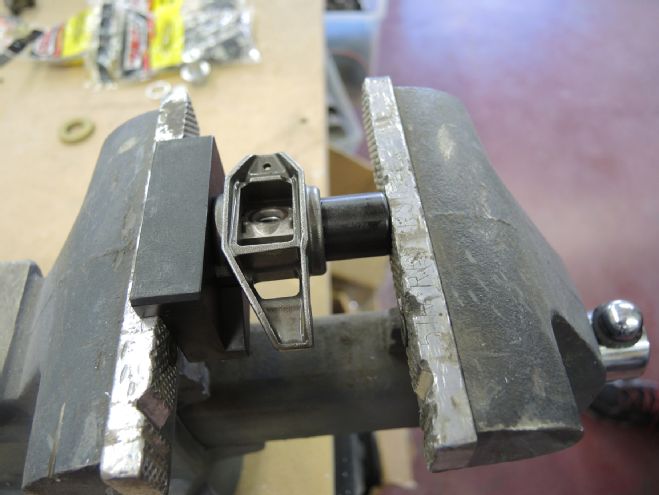
John Bouchard (JohnBouchardEngines.com) removes the bank of rockers as a first step.

Using a Summit Racing trunnion bearing installation and removal tool (SME-906011) and a common bench vice, the OE trunnion is pressed out of the rocker arm.
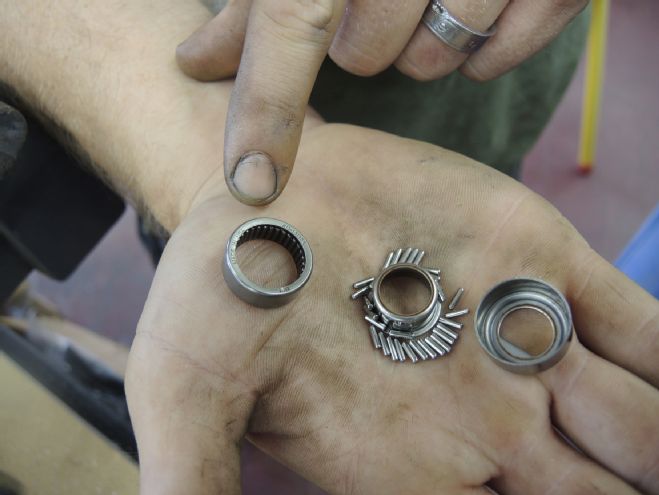
Here, Bouchard shows us the difference in the caged bearings and the OE non-caged needle bearing setup, as well as the bearing retention the caged setup gives; the composition is 8420 alloy, as opposed to the powdered metal stock setup. This photo illustrates why you'd want to upgrade these 16 waiting time bombs.
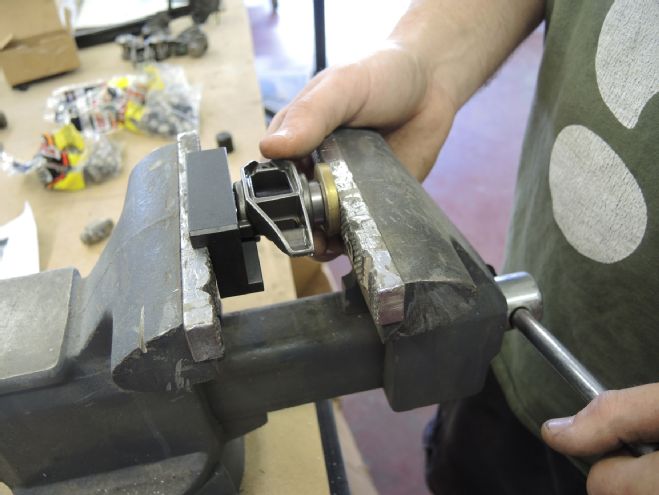
The new caged trunnions are pressed back into the rockers and held in place with a snap ring.
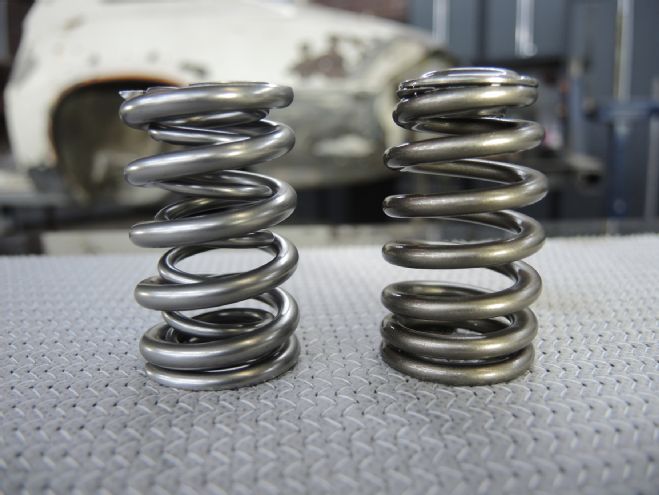
Along with the rockers, valvesprings are changed out for the Comp double spring set (left). This leaves no stone unturned in the LS heads and will allow us to confidently reach for ridiculous power numbers with this engine.
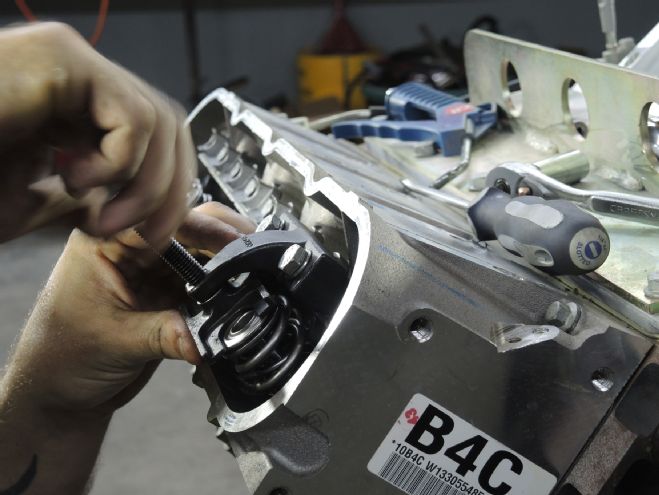
Using a Comp valvespring compressor tool, Bouchard installs the new springs and keepers. This tool's low profile means you can perform this operation with the engine still in the car—a huge advantage for those doing this job on a good engine.
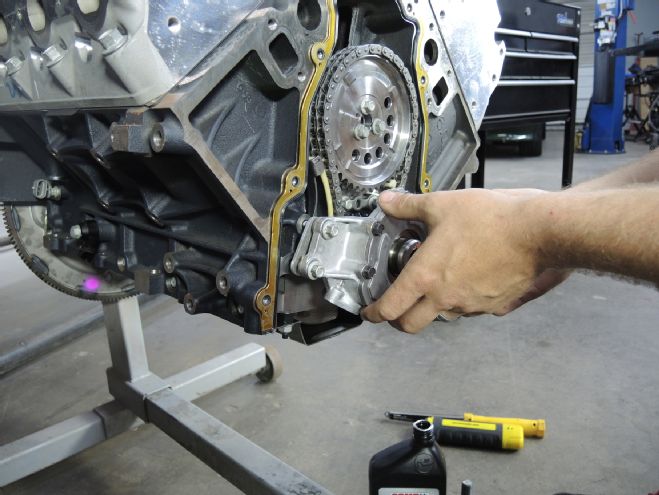
During the cam swap, we installed a new double roller timing set to further bolster the rotating assembly. Since you have to tear down the entire front of the engine to get to the oil pump itself, we upgraded to a Chevrolet Performance high-volume oil pump from Summit Racing (PN -NAL-17801830). The salvage-yard LS swap has been proven time and again, but outsmarting potential failures with some of these sensible and affordable upgrades will ensure you'll have reliable performance when you mash the loud pedal.